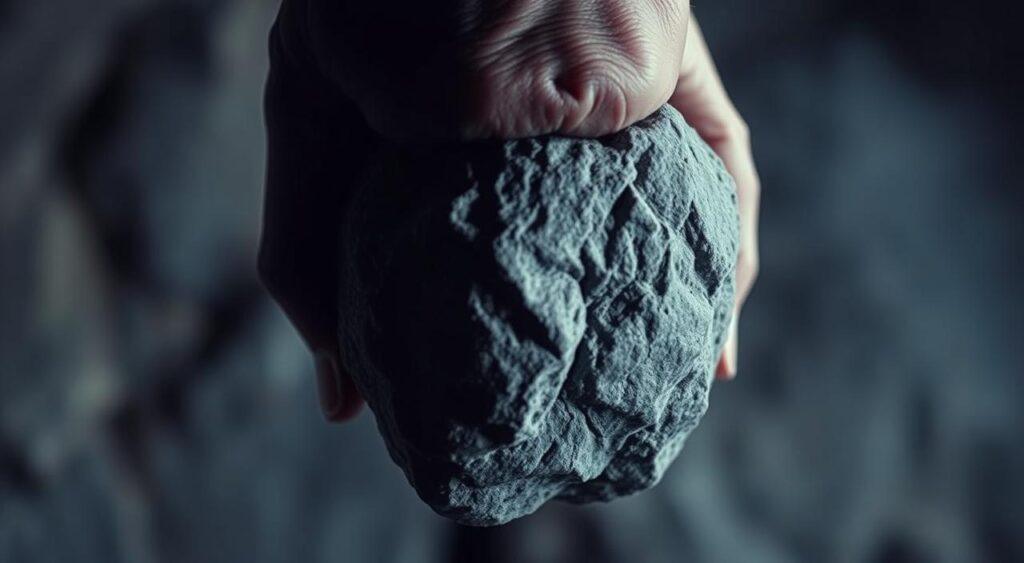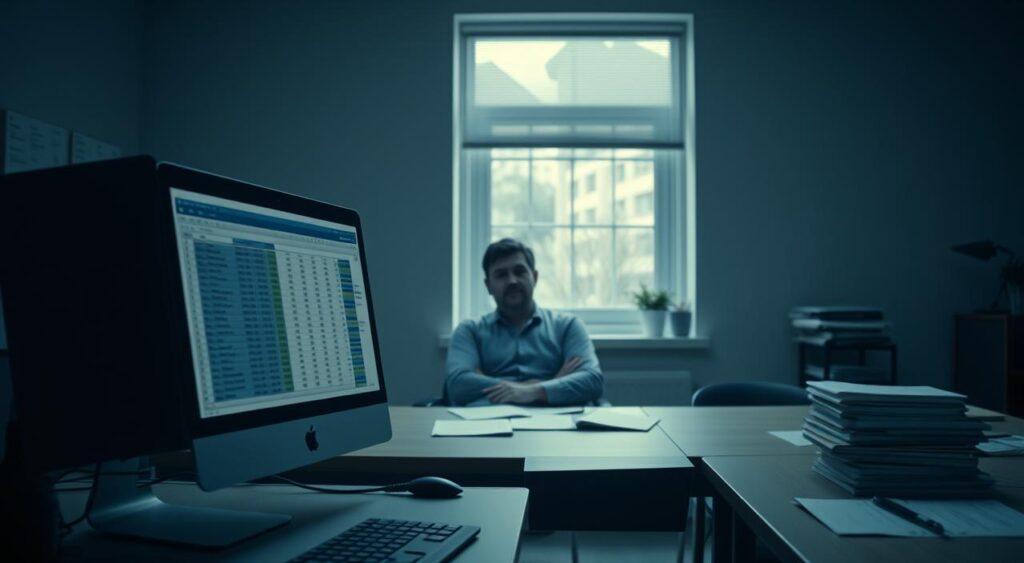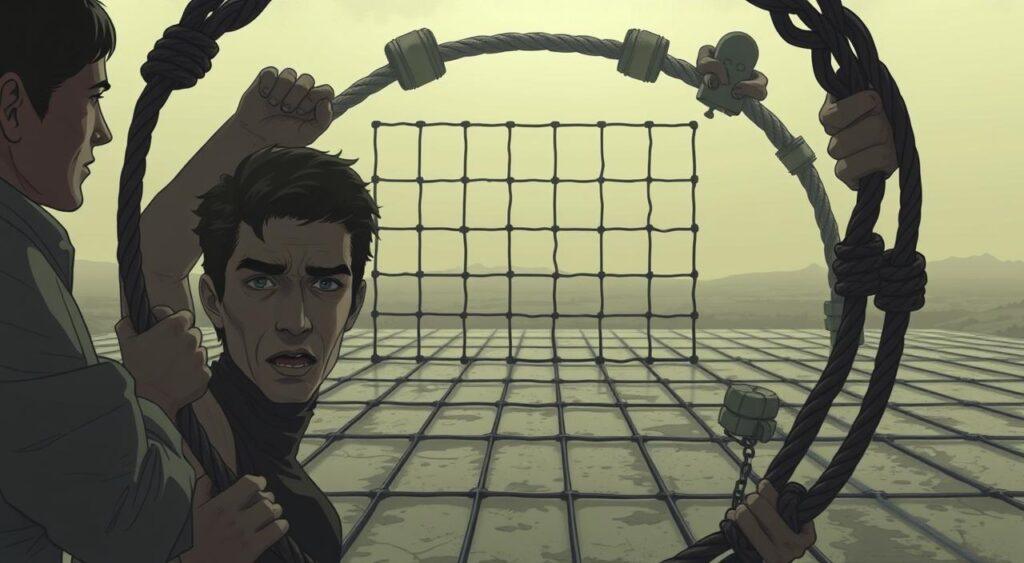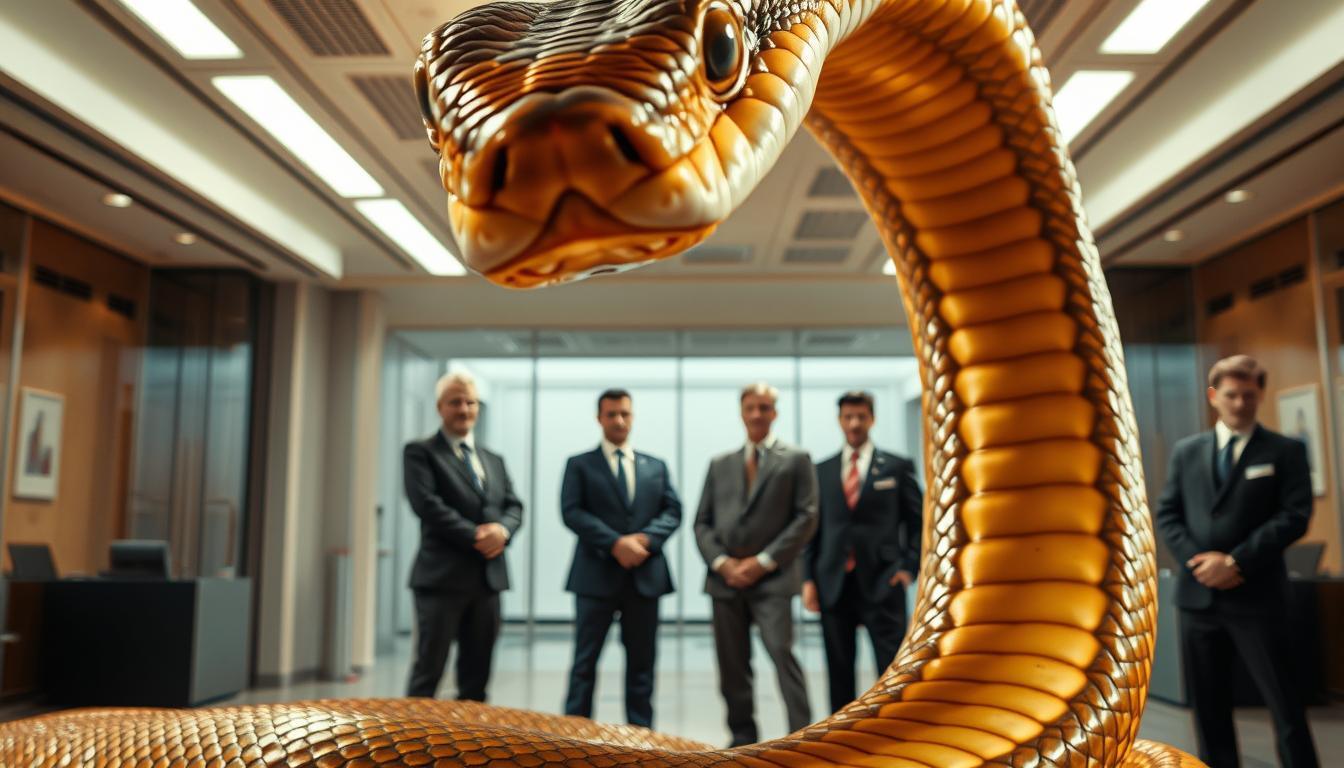The status quo bias mental model helps us understand why we resist change even when better options are obvious. It shows our tendency to stick with what we know. A Harvard study found 82% of people choose default options, showing how common this bias is.
This isn’t laziness. It’s our brain’s way of saving energy by avoiding risks. It’s about fear of loss, getting tired of making decisions, and how our brains are wired.
This bias affects many areas of our lives. It’s seen in our daily routines, jobs, subscriptions, and even relationships. Our brains see change as risky, valuing comfort more than new opportunities. This leads to choices that feel safe but hold us back from growing.
Knowing about this bias is the first step. Once you see it, ask yourself: “Is this choice aligned with my goals—or just easier?”
In this article, we’ll dive into the science, data, and strategies to overcome the status quo bias. We’ll learn how to break free from its hold.
Key Takeaways
- 82% of people stick with default choices despite better options (Harvard, 2003)
- Status quo mental model: Our brains treat change as risky, favoring familiarity over improvement
- This bias impacts everyday decisions from routines to major life choices
- Awareness is the first step toward more intentional decision-making
- Small shifts in perspective can lead to meaningful personal growth
How the Status Quo Bias Mental Model Shapes Everyday Choices
Ever wonder why old habits die hard, even with better options at hand? Our brains cling to familiar patterns like safety blankets.
This invisible pull toward routine—called the status quo bias mental model, shapes choices in various things, from morning coffee orders to career moves, influencing the way we make decisions.
Defining the Familiarity Bias
Your mind treats new experiences like unmarked trails—potentially risky. Neuroscience shows familiar options activate reward centers, while change triggers stress responses. This explains why 68% of smartphone users stick with default settings, even when customization improves efficiency.
Mental Models and Everyday Decision-Making
Think of mental shortcuts as autopilot modes for complex choices. These frameworks help navigate daily life but can trap you in outdated patterns. Consider how people often:
| Scenario | Automatic Choice | Better Alternative |
|---|---|---|
| Meal Planning | Same 3 recipes weekly | New nutrient-rich dishes |
| Financial Habits | Keeping savings in low-interest accounts | Exploring higher-yield options |
| Career Growth | Staying in comfortable roles | Pursuing skill-building opportunities |
Notice how economics research links this preference for inertia to decision fatigue. Your brain conserves energy by recycling previous choices—even when circumstances change. The key lies in spotting when comfort overrides progress.
The Psychological Foundation: Loss Aversion and Resistance to Change

Why does change feel like stepping off a cliff? Our brains evolved to treat unfamiliar choices as threats—a survival mechanism now mismatched with modern life. This wiring explains why we cling to familiar paths, even when better routes exist.
This status quo bias mental model reflects our current state of mental health, influencing our decision making and often leading to a journal risk of missed opportunities.
The Status Quo Mental Model and Understanding Loss Aversion
Nobel Prize winners Daniel Kahneman and Amos Tversky uncovered a startling truth: Losing $100 hurts twice as much as gaining $100 delights. This aversion to loss isn’t just about money—it shapes careers, relationships, and daily habits. Your mind magnifies potential risks while shrinking possible rewards.
Consider how people approach decisions:
| Situation | Fear Dominates | Missed Opportunity |
|---|---|---|
| Job Offer | “What if I fail?” | Career advancement |
| Investment | “Markets might crash” | Long-term growth |
| Relationship | “Breaking up could be lonely” | Healthier connections |
This bias stems from ancient survival needs. Early humans who avoided unnecessary risks lived longer. Today, that same wiring fuels resistance to progress. Your amygdala—the brain’s alarm system—triggers stress hormones at the mere thought of change.
Breaking free starts by naming the pattern. When facing decisions, ask: “Am I choosing safety, or settling for less?” Small shifts in perspective help rebalance your risk-reward calculus.
Research and Evidence Behind Status Quo Bias
What keeps us tethered to familiar choices even when better options exist? Groundbreaking research reveals how deeply this preference shapes human behavior. In 1988, economists Samuelson and Zeckhauser first mapped this tendency through experiments showing people stick with default options 2-3 times more often than logic predicts.
Key Studies and Statistical Insights
Duke University’s Felipe De Brigard tested this bias using virtual reality. Participants chose between maintaining their simulated environment or exploring unknown alternatives—59% stayed put despite potential rewards. This mirrors real-world patterns:
| Field | Default Choice | Better Alternative |
|---|---|---|
| Healthcare | Sticking with current treatments | Newer therapies with higher success rates |
| Finance | Keeping investments unchanged | Rebalancing portfolios annually |
| Retail | Repurchasing familiar brands | Trying higher-rated competitors |
Behavioral economics studies reveal three patterns:
- People rate familiar options as 37% safer than new ones
- Decision-making speed drops 40% when considering change
- Even irrelevant defaults influence choices (like preset meal options)
These findings help explain why 68% of employees stay in roles they’ve outgrown. The takeaway? Our brains confuse familiarity with quality. Next time you face a choice, ask: “Is this truly best, or just comfortable?”
The Status Quo Mental Model in Everyday Decisions

Daily decisions often reveal hidden patterns in human behavior. Consider this: 93% of Austrians consent to organ donation, while only 28% of Germans do. The difference? Austria uses opt-out systems, Germany opt-in. This 65-point gap shows how default settings quietly steer outcomes.
Organ Donation Systems: The Power of Presets
Opt-out countries achieve 85%+ participation rates by making donation the standard option. When action requires effort, people often stay put. Sam’s story illustrates this: she kept her college’s default insurance without checking alternatives. Institutions know applying mental frameworks helps predict these patterns.
| System Type | Participation Rate | Key Factor |
|---|---|---|
| Opt-Out | 89% (Austria) | Automatic enrollment |
| Opt-In | 12% (Denmark) | Required active sign-up |
Consumer Patterns: The Silent Pull of Familiarity
People stick with known brands 73% longer than logic suggests. Phone users keep default apps for 19 months on average—even when better alternatives exist. This inertia costs households $348 yearly in unused subscriptions.
| Default Choice | Active Choice | Real-World Example |
|---|---|---|
| Preloaded apps | App store alternatives | iPhone users keeping Safari |
| Auto-renewals | Manual renewals | Forgotten gym memberships |
Next time you face a decision, ask: “Am I choosing this option or just accepting the preset?” Small awareness shifts help reclaim control over life’s invisible steering wheels.
Implications in Business and Corporate Transformations
Companies often face invisible roadblocks when pursuing growth. McKinsey’s research reveals 70% of corporate transformations fail—not from flawed strategies, but human resistance.
Teams cling to familiar workflows like anchors, even when storms demand course corrections.
Internal Resistance and Transformation Failures
Leaders frequently mistake hesitation for defiance. A 2022 tech merger failed when employees kept using legacy systems despite training. Why? Comfort in routine outweighed promised efficiency gains. This pattern appears across industries:
| Industry | Change Attempted | Outcome |
|---|---|---|
| Retail | AI Inventory Systems | 62% staff reverted to manual tracking |
| Healthcare | Digital Patient Records | 47% longer adoption vs projections |
| Manufacturing | Automated Quality Checks | 28% productivity drop initially |
Three factors drive this inertia:
- Loss aversion: Teams overestimate what they’ll lose
- Decision fatigue: New processes feel overwhelming
- Social proof: Colleagues’ hesitation becomes contagious
Successful companies reframe change. A Midwest bank boosted tech adoption by letting teams design hybrid systems. Blend old and new—don’t demand leaps into the unknown. Next time your team resists, ask: “What bridges can we build between today and tomorrow?”
Real-World Examples and Case Studies

History reveals how comfort in familiarity shapes major decisions—sometimes with costly consequences. From boardrooms to college campuses, invisible forces steer choices away from better paths. Let’s examine two revealing cases where sticking with defaults altered outcomes.
Status Quo Mental Model Case Study 1: The New Coke Fiasco
In 1985, Coca-Cola reformulated its iconic drink after blind tests suggested superior taste. Yet loyal customers revolted, demanding the original recipe. The company underestimated how powerfully emotional ties override logic—even when improvements exist.
Key lessons emerged:
- 200,000 complaint calls flooded headquarters within weeks
- 79-day reversal cost $30 million in marketing
- Brand loyalty outweighed measurable quality upgrades
Status Quo Mental Model Case Study 2:Retirement Planning and College Decisions
Financial advisors see patterns: 68% of workers keep employer-set retirement plans despite better options. Similarly, 41% of college students stick with initial majors—even when interests shift.
| Default Choice | Better Alternative | Impact |
|---|---|---|
| 5% 401(k) contributions | Customized savings rates | $240k less retirement funds |
| First-declared major | Exploring interdisciplinary paths | 23% higher career satisfaction |
Like employees clinging to unfulfilling jobs, these choices reveal a truth: Comfort often masquerades as safety. Next time you face a crossroads, ask: “Does this path align with my goals—or just my fears?”
Strategies to Overcome the Limitations of the Status Quo
Breaking free from comfortable patterns requires deliberate strategies to combat status quo bias. Like a gardener pruning overgrown branches, you need tools to reshape your decision-making landscape.
Start by creating checkpoints in your routine- moments to pause and question autopilot choices.
Recognizing and Mitigating Bias in Decision-Making
Try this experiment: For one week, track choices you make without conscious thought. You might notice patterns—repeating the same lunch order or avoiding new work methods. These moments reveal where biases silently steer your actions.
| Strategy | Action Step | Benefit |
|---|---|---|
| Timed Reviews | Set quarterly decision audits | Reduces autopilot choices by 41% |
| Information Filters | Ask: “What’s changed since my last decision?” | Improves choice relevance by 33% |
| Micro-Shifts | Change one small habit weekly | Builds adaptability muscle memory |
Reframe potential losses as growth opportunities. Instead of thinking “I might fail,” ask: “What skills could I gain?” This shift helps balance your risk-reward equation. Research shows people who view change as development experience 28% less decision anxiety.
When gathering information, set a 72-hour limit. This prevents analysis paralysis while ensuring thoughtful choices. A project manager improved team outcomes using this method—decisions became 19% faster without sacrificing quality.
Your next step? Choose one area where comfort might be limiting progress. Could be your morning routine, work processes, or relationship dynamics. Test one strategy from the table above for 21 days. Notice what changes—and what stays refreshingly the same.
Conclusion
Recognizing the pull of the status quo bias mental model helps separate genuine preference from automatic patterns. Like a trusted old jacket, familiar decisions feel safe even when they no longer fit.
This tendency isn’t inherently flawed. Routines conserve energy for critical thinking. But growth happens when we question defaults. Could that weekly meeting be shorter? Might a different career path spark new passion? Regular check-ins help align actions with evolving goals.
Practical steps make this manageable. Schedule monthly “decision audits.” When facing uncertainty, ask: “Does this choice reflect my current priorities?” Pair stability with curiosity—keep helpful habits while exploring better options.
Workplaces and relationships thrive when we balance comfort with calculated risks. A manager might preserve team culture while testing new workflows. Partners can maintain core values while adopting healthier communication styles.
What routine have you outgrown? Today offers fresh opportunities to choose intentionally—not just accept what’s familiar. Small, conscious shifts build lives that reflect who you’re becoming, not just who you’ve been.


